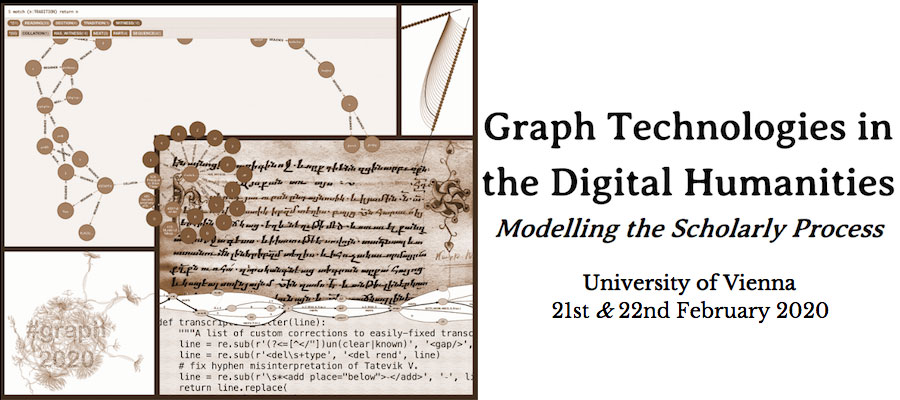Graph Technologies in the Digital Humanities: Modelling the Scholarly Process, University of Vienna, February 21–22, 2020
The idea of connecting our knowledge, or networking information, has been a desideratum of digital scholarship since its beginnings. As these networks lend themselves very easily to expression as graphs, our tools of choice have followed: many libraries, archives, museums, and other repositories of data in the humanities make their goods available via Linked Open Data, following the principles of the Semantic Web. Many other research projects in the humanities have adopted graph models and even graph databases as their base, as these lend themselves naturally to collections of information where the link, the connection, or the relationship is paramount.
The 2019 conference celebrated the breadth of application of graph-based approaches in the humanities. For 2020 we would like to follow up with a more focused theme, whose central question is: To what extent are our scholarly processes reflected in our data models, and how (if at all) do graph technologies allow us to capture these processes in the digital realm? That is to say, when we choose to link items of information together (say, the identification of a person in an inscription or of a place in a text), are we adequately capturing the process that led us to make this choice? What mechanisms are (or should be) available to enable fact checking and to reconstruct the provenance of information?
Registration required. Registration closes February 17, 2020.
